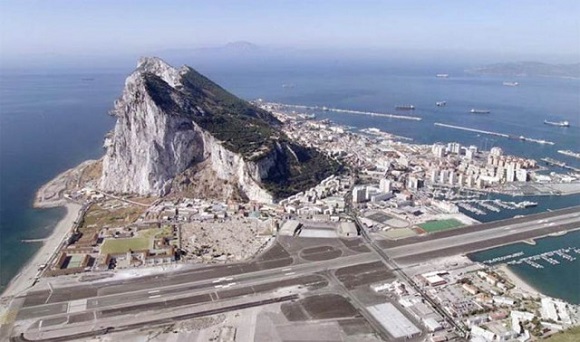
“왓 라이즈 비니스?” 나쁜짓을 하면 안된다는 교훈을 무섭게 준 2000년에 나온 해리슨 포드 주연의 영화 제목입니다. 건설과 관련하여 “아래에 뭐가 있는지?”는 엔지니어링 및 시공업체에게도 무시무시한 리스크를 주는 내용입니다.
지브랄타의 공항(사진)에서 지하 터널과 우회 도로의 디자인 앤 빌드 공사를 맏은 A사는 입찰시 발주처로부터 지반조사서 및 환경영향평가서 그리고 오염지역 보고서 등을 받았습니다. 환경영향평가서에 대략 10,000㎥ 정도의 오염토가 현장 지하에 매립되어 있을 것으로 예상된다고 되어 있었고, 오염지역 보고서에서는 현장이 역사적으로 오랫동안 군용기지 및 사격장으로 사용되었으며 이후 비행장의 기름이 많이 누출된 지역임을 알려주었습니다. 하지만 A사는 현장 조건과 관련하여 별도의 추가 검토 및 조치없이 보통의 공사와 같이 입찰하여 공사를 수주합니다.
여러 사유로 터널 디자인 작업이 상당히 지연되면서 전체 공기가 엄청나게 지연되고 말았습니다. 우여곡절 끝에 공사를 착수하였으나 Diaphragm 작업을 하는 과정에서 오염토가 나오게 되었습니다. A사는 이 오염토가 나오는 것을 근거로 클레임을 합니다. 즉, 예견 불가능한 물리적 조건(Unforeseeable Physical Conditions)을 내세우면서 오염토가 예상한 것 보다 많이 나왔고, 예견 불가능한 것이였으므로 관련 공기연장과 그 비용보상을 청구하였습니다.
계약서인 FIDIC 디자인 앤 빌드 계약(Yellow Book)의 4.12항[예견 불가능한 물리적 조건]은 시공사가 공기 및 비용 클레임을 가능하게 다음과 같이 규정하고 있습니다.
“만약 시공사가 예견 불가능하다고 판단되는 불리한 물리적 장애를 만날 경우 시공사는 실제 가능한 빠른 시한내에 이를 감리자에게 통보해야 한다.”
그럼 과연 무엇이 ‘예견 불가능한’ 것일까요? Yellow Book에서는 다음과 같이 정의하고 있습니다.
“예견 불가능하다는 의미는 입찰서 제출시 경험있는 시공사가 합리적으로 예견할 수 없다는 것을 의미함.”
본 클레임 건과 관련된 소송에서 판사는 핵심 쟁점인 입찰시 ‘경험있는 시공사가 합리적으로 예견할 수 있었는지’를 판단하게 됩니다. 그리고 여러 정황을 검토한 후, 최종적으로 이렇게 판결합니다.
“실제 A사는 입찰시 경험있는 시공사가 합리적으로 예견 할 수 있는 양을 넘는 물리적 장애인, 오염토를 맞닥뜨리지 않았음. 주된 오염원은 납과 탄화수소였으며 이들은 터널 라인과 터널 경사로를 따라서 그리고 지표면에서 5m아래로 만들어진 인공지대에서 발견될 수 있는 것들로 입찰시 합리적으로 예견 가능한 것이였음. 예견 가능한 오염물의 분량과 관련하여 예견되었어야 했던 정확한 양을 나타내기는 어렵지만, 10.000㎥ 보다는 훨씬 많은 분량임.”
즉, 시공사는 모든 유용한 자료를 스스로 평가할 수 있었어야 하며, 주어진 자료를 단순하게 받아들여 그러한 것들이 예견 가능한 전부라고 해서는 안된다고 결정합니다.
결국 A사는 오염토와 관련하여서는 전혀 공기연장과 그 비용보상을 받지 못하였습니다.

What lies beneath?
“What lies beneath?” is a film starring Harrison Ford in 2000, which gave audiences a scary lesson, not to do bad things. In the construction industry, what lies beneath is a huge and dangerous risk to designers and contractors, and even employers.
At tender stage, contractor A received a Soil Investigation Report, Environmental Statement, Contaminated Land Desk Study and various other contractual documents for the design and build project of a tunnel and road in Gibraltar airport. In the Environmental Statement, it was roughly estimated that the contaminated material in the site would be around 10,000㎥. The Contaminated Land Study showed that historically the site had been influenced environmentally with lead and hydrocarbon by its use as a military base, rifle ranges and later as an airport area. Contractor A, however, had tendered for the project as normal without any further review and taking other measures on the ground conditions, and finally was awarded it.
The works have been delayed significantly mainly because of the tunnel design after commencement. After many twists and turns, contractor A was able to start the works but encountered contaminated soil during diaphragm work. Contractor A claimed inter alia that it had encountered more contaminated soil in the ground excavated on the site than would have been reasonably foreseeable by an experienced contractor at the time of tender.
In the conditions of contract, FIDIC Design & Build (Yellow book), Sub-Clause 4.12 [Unforeseeable Physical Conditions] allows a contractor to claim time and money and states:
“If the Contractor encounters adverse physical conditions which he considers to have been Unforeseeable, the Contractor shall give notice to the Engineer as soon as practicable.”
What is then ‘Unforeseeable’? Yellow Book provides that:
“…means not reasonably foreseeable by an experienced contractor by the date for submission of the tender”
The court considered what contamination was reasonably foreseeable by an experienced contractor at the date of tender and concluded as follows:
“I am satisfied that OHL did not in fact encounter physical conditions in relation to contaminated soil over and above that which an experienced contractor could reasonably have foreseen by the date of submission of its tender. The primary contaminants encountered were lead and hydrocarbon, which were reasonably foreseeable at the date of tender as likely to be encountered particularly along the line of the tunnel and the tunnel ramps and within the made ground which extended down in places to over 5m below existing ground level. In terms of quantities of contaminants to be foreseen, it is difficult to put any precise figure on what should have been foreseen but in my judgment the amount would be very substantially above 10,000㎥.”
In summary, the court held that an experienced contractor would make its own assessment of all the available data. The contractor must make a reasonable assessment of the physical conditions which it may encounter and should not simply accept someone else’s interpretation of the data and say that is all that was foreseeable.


